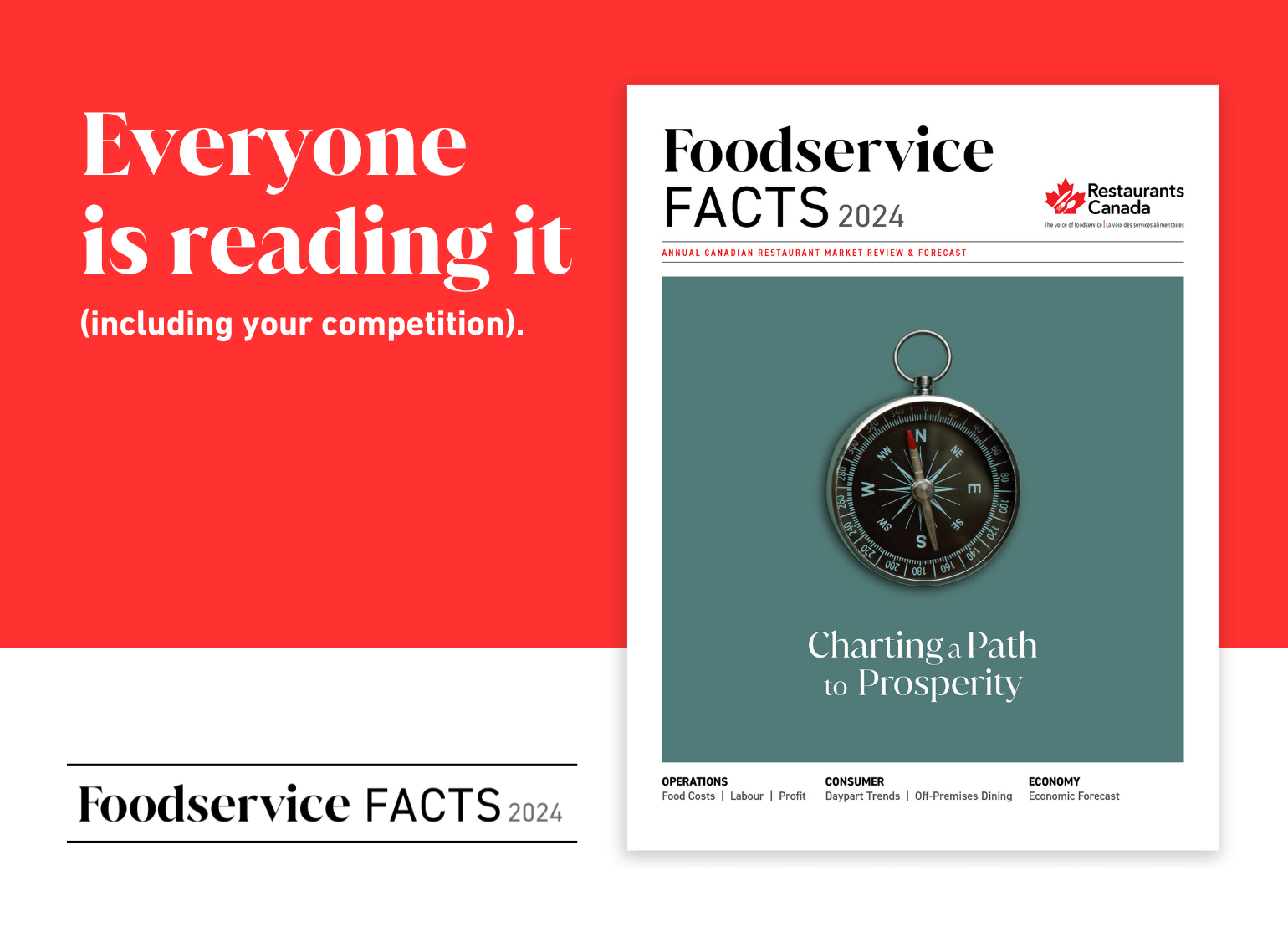Restaurants Canada: Charting a Path to Prosperity

The 2024 Foodservice Facts research report shows restaurants are entering an era of transformation. Incremental growth is on the horizon, but the affordability crisis of today continues to present challenges for both consumers and restaurant owners.
Canada’s foodservice industry is forecasted to reach almost $120 billion in 2024, a 4.9% increase from 2023. However, when adjusted for menu inflation and population growth, Canadians are spending less, with average spending down, at -1.8%. This emphasizes the ongoing obstacles restaurants face, with top concerns being the rising cost of food, insurance and utilities.
Rising household debt and living expenses are reshaping consumer habits, yet the allure of dining out remains strong, especially for Millennials. Canadians love their restaurants, with 45% dining out at least once a week. Today’s guests want value, speed and convenience.
Key Highlights
Demographics & Diversity: Dining out is a lifestyle staple for Millennials and Gen Z, with almost half (49%) dining out weekly. By 2041, the visible minority population in Canada is projected to grow from 10 million to nearly 20 million, many of whom dine out more frequently. South Asian, Chinese and Middle Eastern communities lead this trend – shaping the future of the foodservice industry.
Recovering Economy: The foodservice industry is set for steady, though tempered, growth over the next 5 years. Despite rising overall sales, individual spending at restaurants will remain relatively flat, held back by modest disposable income gains.
Technology: Technology will play a key role in the future of the foodservice sector– not a replacement for the human touch that defines our industry, but as a complement that enhances the employee experience, improves productivity and addresses the ongoing labour challenges, efficiency and accuracy.
Loyalty Programs: Guests are more value conscious than ever before. Behaviours and habits have changed, and consumers are looking for deals to make dining out still affordable. Loyalty programs have become a big part of the restaurant fabric. To stay competitive, restaurants are also using limited time offers, tasting menus, cooking classes and meal kits.
“As discretionary spending becomes more constrained, our customer’s expectations have intensified, expecting more value, experience, and innovation. New ideas, investment and strategies are required, and the onus is not only on us as industry leaders and entrepreneurs, but also governments with policies that protect and support the 4th largest private employer. It is not enough to rely on what has worked in the past,” said Kelly Higginson, President and CEO, Restaurants Canada.
Economic Impact on Canada
Our industry is a powerhouse contributor to the Canadian economy, generating $26 billion dollars in annual taxes for federal, provincial and municipal governments. The spillover investment is significant – for every dollar of output in the restaurant industry, $1.80 of output is generated in the broader economy.
Employing nearly 1.2 million people, or 6% of the country’s workforce, the foodservice industry touches every corner of our country. “Restaurants are more than just places to eat, they build communities, and shape and reflect our values as a society. We believe the future of the foodservice industry will be prosperous, sustainable and meaningful.” said Higginson.
About Restaurants Canada’s FSF:
The Foodservice Facts report is an indispensable resource for the Canadian foodservice industry, serving as a roadmap and offering valuable guidance on everything from consumer behaviour to market dynamics. It is instrumental in shaping the strategies that drive growth and innovation within our industry.
Media interested in the full 2024 annual Foodservice Facts report can reach out to media@restaurantscanada.org

